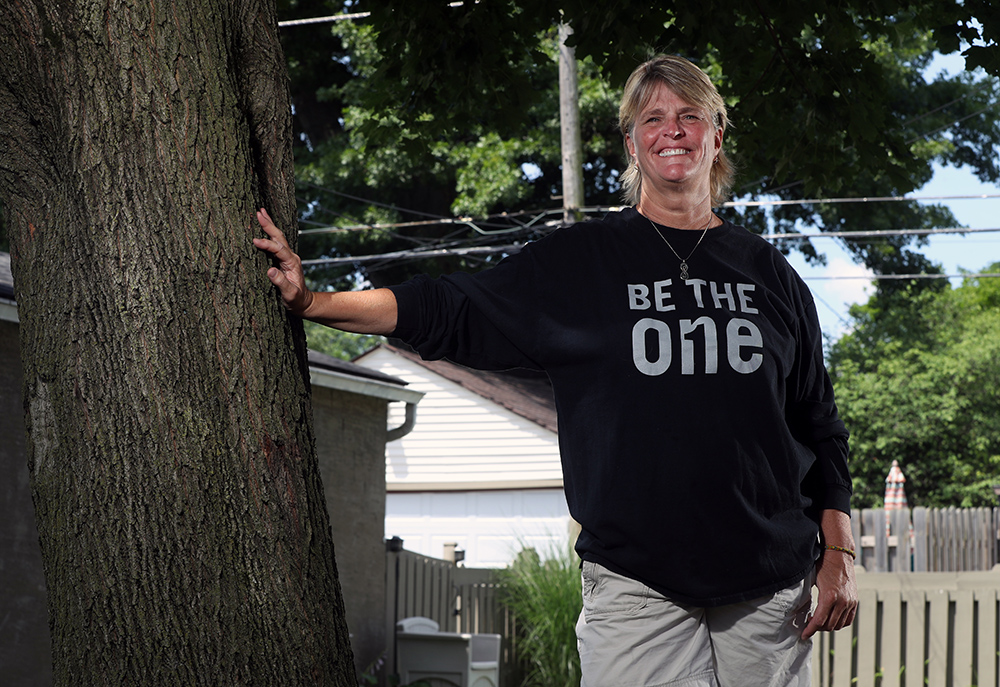Everyday Heroes semifinalist Dawn Heideman is shown July 15, 2020, at her home in Bexley, Ohio. Shane Flanigan | ThisWeek News
Dawn Heideman
During her first teaching job at Athens Middle School in 1990, Dawn Heideman had an epiphany about the empathy she was feeling for the struggling students in the building.
Often, she realized, these students were struggling due to no fault of their own. Socioeconomic barriers and disruptive factors in their home and family lives were preventing them from reaching their potential. “I was always drawn to the kids who had fallen through the cracks and maybe weren’t really successful academically or behavior-wise,” said Heideman, who started her career as a math teacher.
“It’s been so odd in my career. Where some teachers—not all, but some—scrap to get the honors classes and things like that, I’ve always been drawn to the kid that struggles, because I find that their struggle isn’t a lack of intelligence or lack of ability. Usually it’s outside issues or the trauma they’re bringing to the table that is almost making a barrier to their learning. I just love those kids. I bond with those kids best.”
Heideman experienced that firsthand in Athens Middle School’s first pull-out Title I math program. “I had those kids that weren’t achieving anywhere else,” she said. “To create a relationship with them, and to see the lightbulb turn on and the excitement, I think you can turn their lives around.”
This served as a precursor to 2015, when Heideman’s passion for helping at-risk and disadvantaged students reach their potential culminated in the creation of the BE THE ONE program at Walnut Ridge High School. The social-emotional learning program “helps give students a voice, opens new opportunities for all students involved, exposes kids to new experiences, opens the door to different role models and basically gives kids the motivation they need to come to school and be successful,” Heideman said.
The program uses the Adverse Childhood Experiences Survey—10 questions regarding traumatic childhood experiences to assess the likelihood of an individual experiencing challenges later in life—to determine which students could most benefit from BE THE ONE.
Students who score highly on the survey or are referred by someone such as a teacher, guidance counselor or parent are welcome to join the program, which meets mostly during the school day. Heideman taught three periods of BE THE ONE each day during her time at Walnut Ridge, and she will do the same when she moves to Linden-McKinley Middle School this school year.
Class activities include working with nonprofits, community service events and listening to speakers discuss personal and professional development.
Students have participated in community service initiatives involving Save Our Adolescents from Prostitution, the Ohio State University James Cancer Hospital, the Van Buren Center shelter and Ronald McDonald House.
Heideman, who invests about $10,000 of her own money into the program annually, said BE THE ONE empowers students. “It’s almost like the weight was lifted off their shoulders and they were free to be who they were as people and free to achieve as students,” she said.
“I don’t know anybody that cares more for her students,” said Heideman’s neighbor, Phyllis Jean Tapee. “I don’t know anybody that’s done more than her.”
BE THE ONE also was incorporated in 2018 into Linden-McKinley High School, where it was instructed by English teacher Carla Hegyi.
About 500 students have participated in BE THE ONE over the last five years, Heideman said. “For me, I can never go back to only teaching math,” she said. “This is my calling. This is my purpose.”
